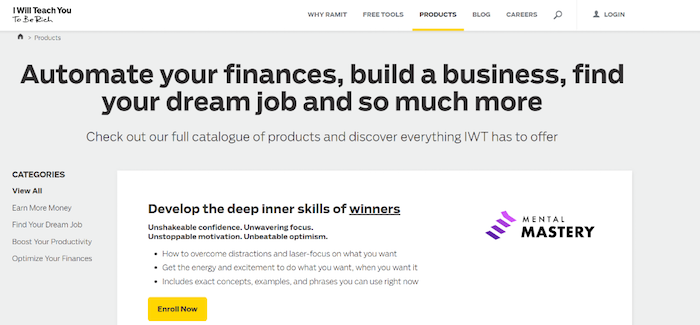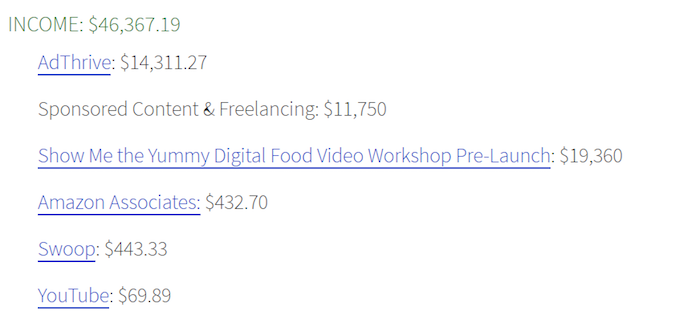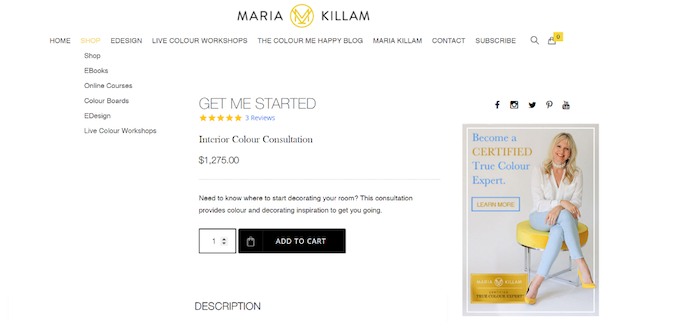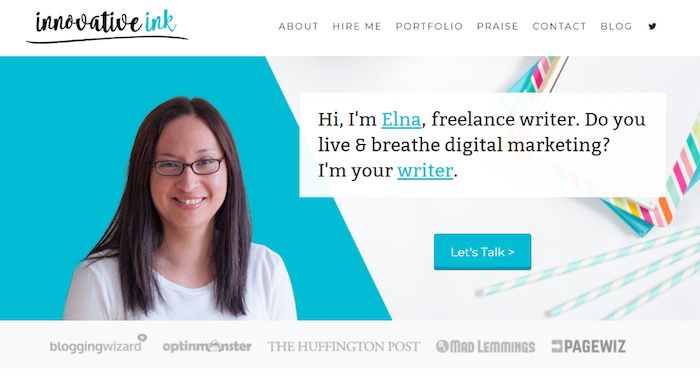There are many guides about how to make money blogging, but here’s what makes this one different…
I’ve taken three different blogs to over $1 million per year. In fact, the blog you’re reading right now has made a total of $15 million.
I don’t think anyone else on the web has those kinds of stats.
And honestly, it’s changed my life.
Since starting Smart Blogger, I’ve gotten to travel the world, become friends with amazing people, and have the freedom to live exactly like I want.
All while being unable to move from the neck down. I have a fatal disease called Spinal Muscular Atrophy, and I’m in a wheelchair, operating the computer with speech dictation software and a mouse I move with my lips.

None of that has stopped me. Thanks to this blog, I’m able to pay for a round-the-clock nursing staff, a private chef, and a very spoiled golden retriever named Winston.
I’m blessed. And if you pay attention to what I have to teach you, you might be surprised what you can accomplish for yourself.
If you’ve been wondering how bloggers earn money, you are in exactly the right place
By the time we are finished, you’ll know exactly where the money comes from, and you’ll have no doubts about the legitimacy of it.
Let’s jump in.
7 Ways to Make Money Blogging (with Examples!)
- Online Courses and Workshops
- Books and Ebooks
- Affiliate Marketing
- Advertising
- Speaking Gigs
- Consulting/Coaching
- Selling Freelance Services
Here are the top 7 awesome ways to make a good blogging income:
1. Online Courses and Workshops
I make about $1 million per year from online courses about various types of writing.
But I’m far from being the leader here.
Ramit Sethi reportedly crossed $10 million dollars per year. Almost exclusively from blog traffic.

How do you create an online course that makes lots of money?
Here are some extra resources:
- How to Sell an Online Course in 5 Fundamental Steps (2024)
- 12 Best Online Course Platforms To Flaunt Your Creativity (2024)
2. Books and Ebooks
I’ve sold about 50,000 books here at Smart blogger. Many people buy one before investing in a more expensive course, almost like purchasing a sample.
Quite a few writers have parlayed their blogging success into a major publishing deal. Mark Manson, for instance, published a blog post called The Subtle Art of Not Giving a F*ck in 2015. Millions of readers later, he got a book deal with Harper Collins and went on to sell over 3,000,000 copies in the US alone.

Self-published books have also been successful. The most notable success story among bloggers is probably James Altucher’s Choose Yourself, which is now sold over 500,000 copies:
Additional resources:
- How to Write a Book in 2024: Everything You Need to Know
- How to Self-Publish a Book: A Comprehensive Guide for 2024
- How to Make Money with Kindle Direct Publishing [2024]
3. Affiliate Marketing
If you’d like to create some passive income streams from your blog idea, one of the best choices is affiliate marketing — recommending the services, digital products, and physical products of other companies in exchange for a commission.
Here at Smart Blogger, we make more than $100,000 per year promoting affiliate products, most of that coming from casually recommending products we love like SiteGround (affiliate link).
With so many companies offering referral programs to help spread the word about their digital product or service, the number of different affiliate marketing opportunities is enormous.
Joining an affiliate network such as CJ Affiliate, ClickBank, eBay Partner Network, or ShareASale is one way to begin tapping into this revenue stream and to start earning extra income from your hard-earned organic traffic.
Further reading:
- Affiliate Marketing in 2024: FREE Guide for Beginners
- 8 Best Affiliate Networks for Earning Passive Income in 2024
4. Advertising
Normally, we’re not big fans of selling a display ad on your site as a monetization strategy. You need roughly a million visitors per year for the large ad networks to take you seriously, and affiliate marketing is almost always more profitable and just as passive.
That being said, some niches like recipes, fashion, and news are hard to monetize through many of the other methods mentioned here, and they get LOTS of page views. In that case, putting a few banner ad on your site can make sense as a supplementary income source.
For example, here’s a screenshot of a 2016 income report from Share the Yummy:

Normally, you make money by joining an ad network. Nearly anyone can join Google AdSense and add a Google Ad or two, for example, and you can later grow into more selective networks like Mediavine and AdThrive.
5. Speaking Gigs
If your blog idea takes off and you start being recognized as an authority in your space, you might be surprised by how many invitations you get to speak at conferences. And it’s amazingly profitable.
I typically make a minimum of $10,000 per speech and it can go as high as $100,000 when you count product sales resulting from the speech.
Not bad for a 60-90 minute talk. 🙂
The downside of speaking gigs is the travel time. Between flights and ubers, you can easily lose an entire day each way.
My advice: start by attending a few conferences in your niche and get to know the conference organizer while you are there. It’s possible they will invite you to speak.
Further reading:
6. Consulting/Coaching
While this certainly isn’t everyone’s cup of tea, doing a bit of coaching or consulting can earn you a surprisingly nice living, even when your audience is small.
When I started Smart Blogger, this is the first way I monetized. I think I charged $300 an hour in the beginning, and my rate gradually rose to $1000 an hour with a waiting list of several months. That’s more than most attorneys!
I also learned a lot about my audience from talking with them every day. It was almost like getting paid to do market research into customer pain points. I then turned that knowledge into some of our most successful online courses.
The best part about coaching and consulting is you can do it in almost any niche. Going back to Maria, again, she’s been quite innovative in coming up with ways to do interior design consultations by photo and email, currently charging $1,275 per room:

You can make this work in almost any blog niche. You just need to know what you’re doing and be confident in the value you are providing to clients.
7. Selling Freelance Services
The next step up from consulting is to actually do it for them.
Typically, you’ll make more money freelancing than with anything else, but it’s also the most draining and time-intensive. That being said, I’ve seen bloggers make six-figure incomes with no more than a few thousand readers on their blog, essentially using their blog as a lead generation machine to get clients.
It’s so profitable, even if successful bloggers continue to do it. For example, Elna Cain continues to sell her freelance writing services:

If you’re a freelance writer, designer, photographer, programmer, or other service provider where your skills can be sold digitally instead of you having to be there in person, you might want to consider this income stream from day one. All you really need to get started is a contact form for clients to reach out to you.
Additional resources:
- Freelance Writing Hub: Ultimate Guide for Freelance Writers
- 36 Beginner-Friendly Ways to Find Freelance Writing Jobs (2024)
- Copywriting 101: How to Become a Copywriter [Free 2024 Guide]
FAQ
Now that you know how to make money blogging, let’s go through some common questions.
Can you make $1,000 a month with a blog?
You can make way more than that. As I said, I’m pulling in about $1 million per year from my blog through online courses. While that’s on the high end, it shows just how much potential there is in blogging.
Now, if you’re aiming for that $1,000 a month mark, here’s a pro tip: the fastest way to get there is probably through offering freelance services. You might only need one good client to hit that target, and the best part? You can snag that client with just a small amount of blog traffic. It’s all about leveraging your skills and using your blog as a showcase for what you can do.
Do beginner bloggers make money?
Sure, but don’t expect to get rich overnight. You’ll need time for traffic to build.
The best way to start earning through things like consulting or freelancing. The big bucks usually come once you’ve grown your audience and everyone see yous as an authority
Is it realistic to make money blogging?
If you’re self-discipline and you can stay consistent, yes, it’s realistic. Blogging is a long-term strategy, not a get-rich-quick scheme.
Most successful bloggers write consistently every single day for at least a year or two before their traffic really starts to pick up. If you’re willing to put in the work and stick with it, the potential payoff can be huge.
What kind of blogs make most money?
The blogs that make the most money are the ones with products to sell. It’s all about having something valuable to offer your audience. Let me break it down for you:
- Blogs with software products: Take Hubspot, for example. They’re worth billions because they’ve got amazing software to back up their content. Their blog drives traffic and leads straight to their product.
- E-commerce blogs: If you’ve got physical products to sell, a blog can be a goldmine. It attracts potential customers and showcases your products in action.
- Blogs with online courses: This is my personal money-maker. If you’ve got expertise to share, packaging it into an online course can be incredibly lucrative.
- Blogs in niches like personal finance, health and wellness, or technology: These areas often have high-value products or services to sell.
- Any blog that solves a specific problem: If you can identify a pain point and offer a solution (whether it’s a product, service, or information), you’re onto a winner.
Remember, the key is to use your blog to build an audience and trust, then offer them something valuable that they’re willing to pay for. It’s not just about the blog itself – it’s about the business you build around it.




